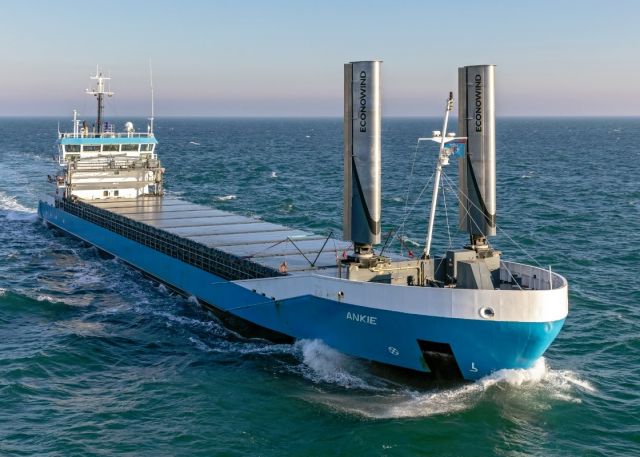The Climate Bond Initiative's draft criteria for shipping has ruffled a few feathers, but it's backers say there's a reason fossil fuel supply chian should not be included. Craig Eason reports.
An organisation creating definitions for green bonds has turned its attention to shipping and devised draft criteria for shipowners and other companies that wish to attract investors keen to put money into climate linked instruments, and it’s already ruffling feathers. The Climate Bond Initiative is funded by the UK Foreign and Commonwealth Office and a large and broad range of philanthropic foundations, as well as the European Union and UN Development Programme. As well as developing criteria and standards to define climate and green bonds in different industry sectors, it issues regular reports on the state of the growing green bond markets. It has already certified $120bn of bonds as climate bonds and is trying to mobilise the whole bond market, which it says is worth $100trillion, towards climate change solutions
It now has draft criteria for shipping and is seeking feedback until the end of June. This work to create criteria defining a shipping climate fund has already been through both a technical working group and an industry working group, which includes representatives from most of the major banks including ABN AMRO, Danske Bank, Citi, DNB, Nordea and some shipowners such as NYK.
Financial institutions having a position on climate risk is not new. The Poseidon Principles, even while being broad in nature, are an indication of how finance houses are beginning to flex their muscles, and there are pensions funds (such as in Norway) pulling equity from companies with a heavy stake in oil and gas extraction project, and the same has been true of shipping. The phrase ‘stranded assets’ has become well used in the last two years as a warning for owners that are not preparing for the future.,
While this focus on sustainability and climate change adaptation has largely been focused on loans and equity, CBI is doing the same with bonds, a form of debt financing that has traditionally not been heavily utilised in shipping, but has been growing in the last decade.
CBI is trying to give pension houses, insurers and other bond buyers a framework to be able to define green or climate bonds that will help them with their sustainability accounting. CBI CEO Sean Kidney told Fathom World there is a growing appetite for green finance, and the bond markets are growing.
A CBI certified green bond is one that has been verified as being issued to fund specific decarbonisation goals. The criteria for shipping is directly linked to a ships energy efficiency (EEOI) and how that will be improved over the duration of the bond. But while this may sound like a small issue it has much bigger implications according to Kidney.
On the one hand the criteria and definitions that CBI has been devising, including shipping when this consultation period is over, is likely to be used by the European Commission with its taxonomy. The EU has plans to make it a regulation for companies to issue sustainability reports, and to help do this have definitions to hep investors and corporates do this. On the other hand, Kidney pointed to some companies that use the CBI criteria and definitions when issuing their sustainability reports and listing any equity investments and loans. The third point that gives the CBI shipping criteria some clout is that banks wishing to issue bonds to refinance loans, can certify them as green and attract investors if it has an underlying green portfolio of loans to corporates, such as ship owners. In other words it will incentivise banks even further to look for shipowners with a fleet that is not at risk of being stranded.
Bonds 101: Bonds, green bonds, climate bonds
Bonds are a form of debt, essentially, they raise capital for a period of time, with the bond issuers giving the lender a regular payment (known as a coupon) until the end of the bond (loan) period – often five or 10 years and known as its tenor – at which point the main capital of the loan is repaid. A corporate, organisation or sovereign would go to the bond markets to raise capital for specific purposes and attract investors (pension funds, insurance companies).
A bond is called a green bond when the money being lent is being used for green purposes. Sean Kidney, CEO at CBI says the purpose is to give investors, and CBI has an impressive list of investors behind it, the reassurance that the money they lend is being used for the green or climate reduction strategies they want to see, and is also of lower risk. “We have a number of investors around the world who use the CBI taxonomy for their sustainability reporting to show they meet the requirements being expressed by their boards and shareholders”, he said.
On its website CBI has a certification scheme under its Climate Bonds Standard, so bonds which are verified to conform with this standard are known as Certified Climate Bonds, and the CBI has a growing range of criteria across different sectors. It helps investors and governments prioritise and select bonds to meet policy and other climate related objectives.
Not happy
The rub for some shipowners, and for some lobby groups is that the draft criteria makes it clear that vessels dedicated to the transportation of fossil fuels can not be linked to climate or green bonds under CBI certification. Sea LNG, the cross-sector lobby group created to promote LNG as a marine fuel is unhappy with the criteria as it stands, particularly with owners of LNG carriers not being able to issue green bonds linked to these types of vessels, although they can still issue ordinary bonds.
In an open letter to CBI it says LNG should be seen as a pathway to other fuels such as liquid bio-methane or liquid synthetic methane. It also said in the letter that it believes the criteria are too technology specific and not goal based. “LNG is a competitive option today and it can act as a strong foundation for future emissions reductions using LBM and LSM as the technologies required to produce them continue to mature,” the organisation wrote.
SeaLNG chairman Peter Keller has been invited to an interview on the Aronnax Podcast, to comment on its criticism of the fossil fuels distancing in the criteria.
Dr Tristan Smith, reader at University College London, is one of the technical consultants used by CBI as it developed its shipping criteria. He has been vocal in the past about the belief that LNG, particularly when used as marine fuel, is a dead-end when it comes to a marine fuel, as it will not help reach the goal of decarbonisation.
“It’s standard practice in climate bonds, ruling out fossil fuel systems,” he said when asked about the exclusions. “It’s primarily because of the risk to the investor. The logic shows a very rapid decline in demand for all types of fossil fuels – coal, oil and gas – and if you have that demand contraction then financing new supply will be seen as a major financial risk.
He added that if fossil fuel assets are already being written down today, then putting money in that direction does not make sense. You can hear ore from Dr Smith on the Aronnax podcast.
Mandatory reporting of sustainability and climate risks
In early 2019 the European Parliament approved a new regulation setting up the building blocks of a capital markets union, including regulations on disclosures relating to sustainable investments and sustainability risks. This includes an official taxonomy to help standardise this, and the CBI is instrumental in the development of this taxonomy.
There will be voluntary compliance for the capital markets available by the end of 2020, then it will become mandatory two years after. As it has done before with other sectors, CBI will put its low carbon shipping criteria forwards to help with European taxonomy, definitions of what can and can not be called climate or green bonds, of what can be labelled risk or not risk.
“I expect the commission will use our criteria as a starting point as they have done with other sectors”, said Kidney, emphasizing how its criteria defining climate bonds could also become definitions for risk assessments in other green financial instruments.
“While we are focusing on bonds nominally as instruments, we are by no means doing a set of criteria just for the bond market. We are doing a set of criteria that cuts across all investments. Now you see the palpable exhibition of this in the EU taxonomy. And the EU taxonomy started off as an idea to guide the green bond market – in other words it is based on the CBI taxonomy – but it has become the core framework for climate risk and sustainability reporting in Europe under this new regulation”.
And one of those areas of investment will be the shipping loan, equity and bond portfolios of major financial institutions.
“We have not done shipping taxonomy yet, we intend to next year. And what we are doing in the CBI taxonomy we are seeing as a prototype that will also feed into the EU taxonomy discussions once the new unit at the Commission is formed by the end of summer”, said Kidney.
































